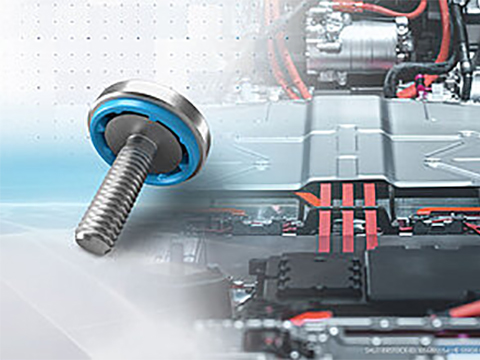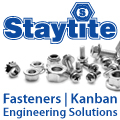
Posted to News on 17th Apr 2025, 09:00
Sealing requirements in the design of new drive concepts
The mobility of the future requires new drive concepts - from electric vehicles with powerful high-voltage batteries to hydrogen storage systems and hybrid lightweight structures. These innovations increase the demands on the tightness of joints. Media such as liquids or gases must neither escape uncontrolled nor penetrate from the outside. At the same time, fasteners must be able to withstand mechanical loads and changing environmental conditions for years.

This raises a key question at the start of every design task: how can joints be designed in such a way that they meet the sealing requirements throughout their service life without compromising ease of assembly and maintenance? ARNOLD UMFORMTECHNIK meets this challenge with a three-stage approach that goes beyond pure joining technology: forward-looking engineering, application-specific sealing solutions and innovative testing methods.
Tightness as a design principle
The tightness of a connection does not just start with the choice of fastener it must be taken into account in the early development phase. Leaks and costly repairs can only be avoided if all relevant influencing factors are taken into account right from the start.
This includes a precise analysis of the loads acting on the joints:
Thermal expansion and material differences: In lightweight construction concepts, aluminium, high-strength steels or plastics are often combined. These materials expand differently when the temperature changes, which can put a lot of strain on the connection. A forward-looking design takes these effects into account by making specific adjustments to the geometry, preload and material pairing.
Dynamic loads and settling behaviour: In assemblies such as battery housings or fuel cells, vibrations, pressure changes or temperature cycles cause microscopic movements between the parts to be joined. Without suitable countermeasures, these movements can accumulate over time and lead to leaks. Simulation-based analyses allow these effects to be detected at an early stage and compensated for by design measures.
Media resistance and corrosion: The joints must be able to withstand various media such as coolants, condensate or hydrogen. Not only corrosion-resistant materials play a role here, but also the correct design of the contact surfaces in order to minimize potential leakage channels.
ARNOLD supports designers at this early stage and provides expert knowledge, calculation tools and prototype tests to develop an optimum joining solution.
Customised connection technology
Every application has individual requirements for tightness. This is why ARNOLD relies on specifically adapted fasteners that are precisely matched to the respective operating conditions.
Fasteners with integrated sealing function: Special underhead geometries and defined preload forces ensure that a uniform surface pressure is created. This ensures that there are no gaps through which liquids or gases could escape.
Optimised screw connections: In hydrogen storage systems, screw connections must meet the highest sealing requirements, as hydrogen molecules can diffuse even through microscopic gaps due to their size. Specially developed screw geometries and high-precision threads are used here.
Coatings and surface modifications for permanent sealing: In battery systems, setting losses over time can cause a previously tight connection to leak. These effects can be compensated for with specially adapted coatings or plastically deformable elements.
Optimised pilot hole and screw-in strategies: The correct design of the holes and threads makes a significant contribution to tightness. If the screw-in depth is precisely matched to the material hardness and geometry, micro-gaps that could potentially lead to leakage can be avoided.
Through this targeted adaptation to the respective application, ARNOLD ensures that every connection solution meets the exact requirements that are placed on it in practice.
Targeted validation of tightness
Even the best connection solution has to prove its performance under real conditions. This is why ARNOLD relies on state-of-the-art testing and validation methods to ensure leak-tightness performance over the entire life cycle.
Test gas method (helium leak test): Particularly relevant for high-voltage and hydrogen applications: By using helium as a test gas, even exceptionally small leaks can be detected with high precision.
Differential pressure test: By comparing pressure changes in a test chamber, even minimal leaks can be detected. This method is particularly suitable for larger assemblies where watertightness is essential.
Water column method in accordance with IPX7: For battery systems and power electronics in particular, it is crucial that components are waterproof. The water column method tests the tightness in accordance with ISO 20653 and ensures that joints function reliably even under extreme conditions.
These test methods enable the systematic optimization of connecting elements and give designers the certainty that their assemblies will withstand real-life loads.
A holistic approach to tightness
Tightness is not an isolated problem in connection technology; it is the result of a well-thought-out development process. From the initial design idea to customised connection solutions and validation, ARNOLD relies on a holistic approach that supports the design in every development phase.
Whether in high-voltage batteries, hydrogen systems or lightweight constructions - through forward-looking engineering, application-specific solutions and innovative testing methods, ARNOLD offers an 'all-round carefree package' for the sealing requirements of the future.





